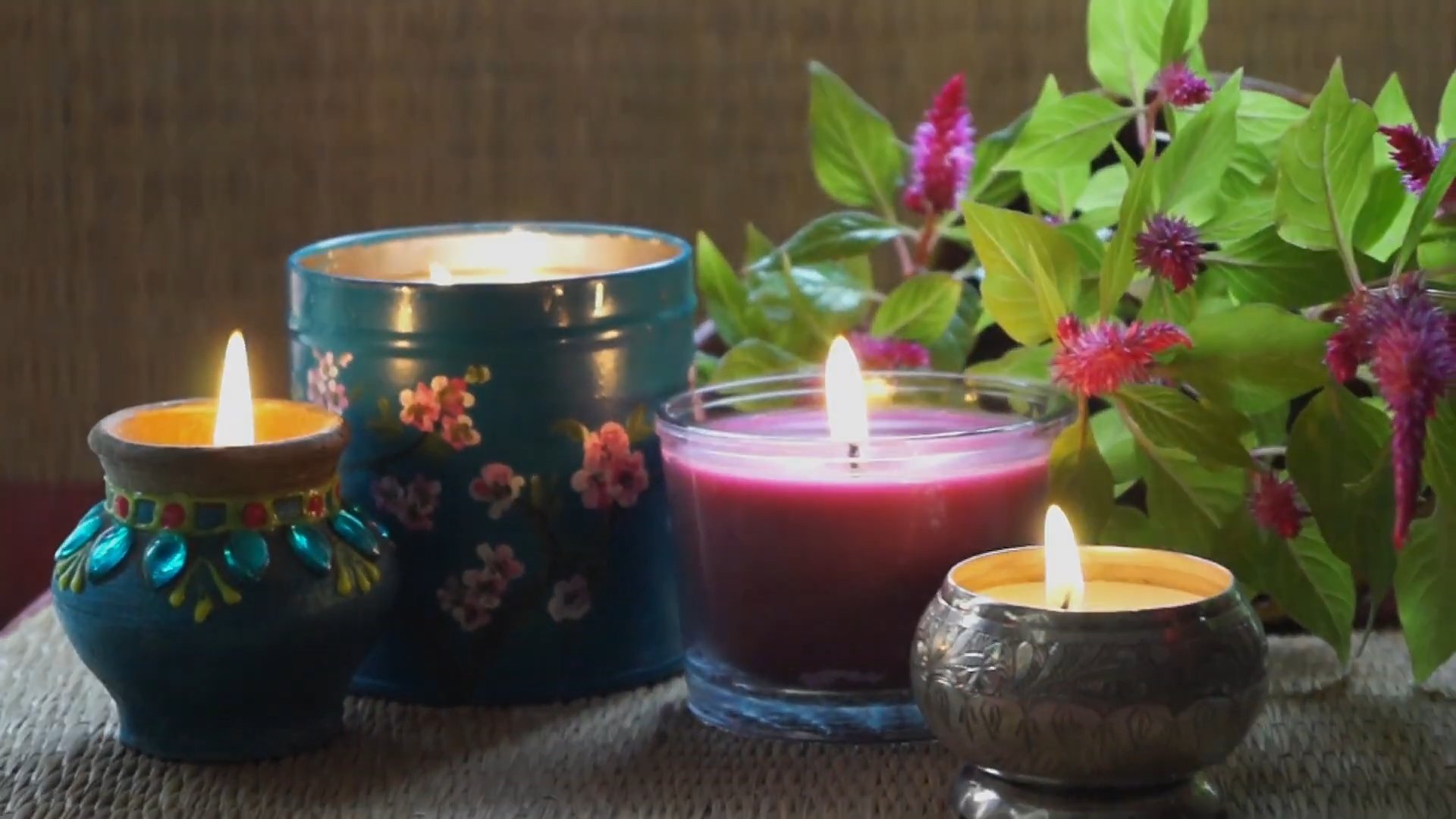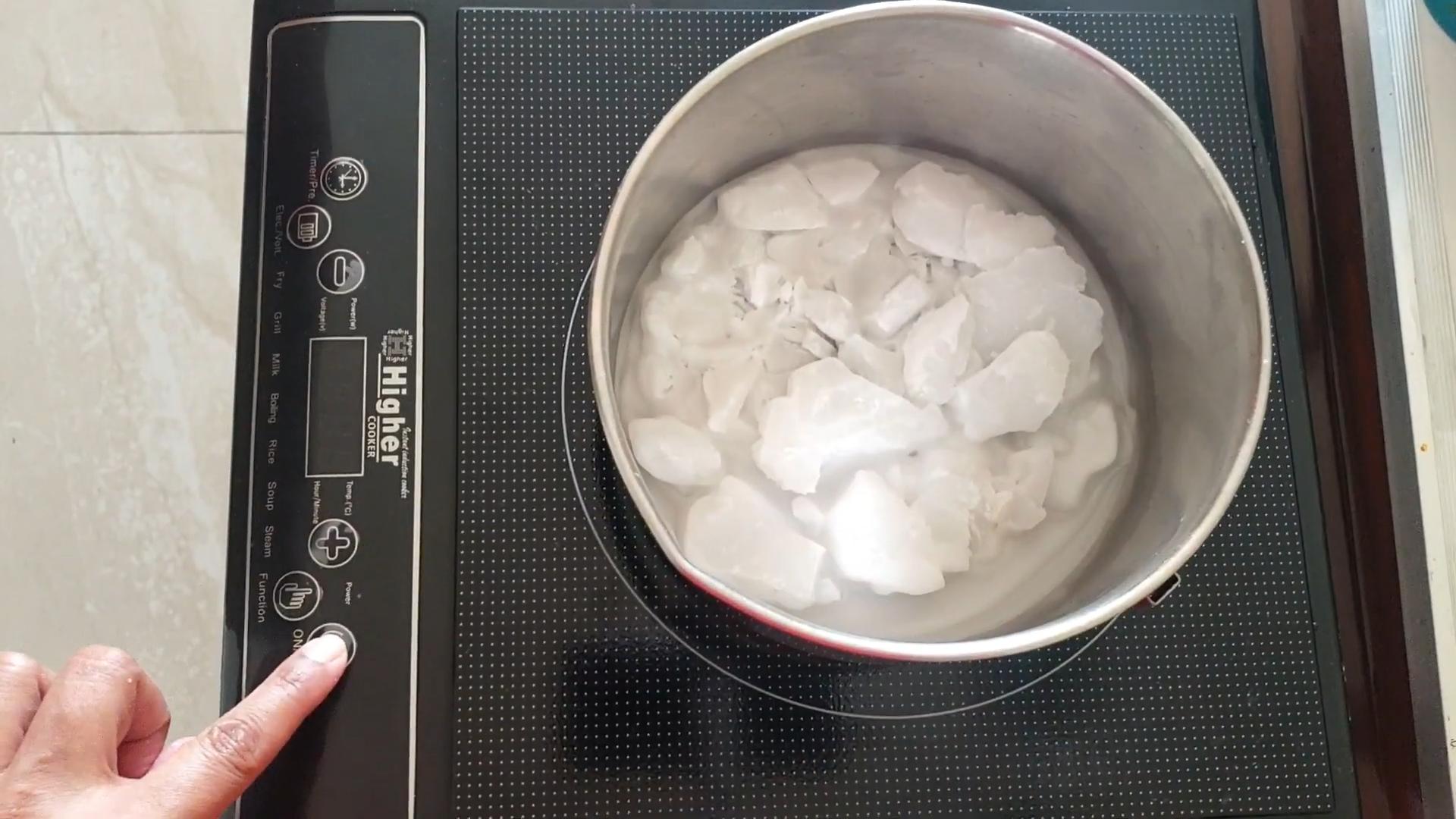DIY candle making guide: Ever wondered how to fill your home with the warm glow and comforting scents of your favorite candles without breaking the bank? I know I have! For centuries, candles have been more than just a source of light; they’ve been used in rituals, celebrations, and as a symbol of hope and remembrance. From ancient Egyptians using beeswax to create tapers to the elaborate candelabras of the Victorian era, candles have always held a special place in our lives.
But let’s be honest, those store-bought candles can be pricey, and sometimes, they just don’t have that personal touch. That’s where the magic of DIY comes in! This DIY candle making guide will empower you to create beautiful, personalized candles right in your own kitchen. Imagine crafting unique scents that perfectly match your mood, using eco-friendly waxes, and designing candles that reflect your individual style.
Whether you’re looking to save money, reduce waste, or simply unleash your creativity, this guide is your one-stop shop for all things candle making. I’m going to walk you through every step, from choosing the right supplies to mastering the art of fragrance blending. Get ready to transform your home into a cozy, aromatic haven, one handmade candle at a time!

“`html
DIY Candle Making: A Beginner’s Guide to Creating Beautiful Scents
Hey there, fellow crafters! Ever wanted to fill your home with the warm glow and delightful aroma of your own custom-made candles? Well, you’ve come to the right place! I’m going to walk you through the entire process of making candles at home, from gathering your supplies to pouring that perfect, fragrant wax. Trust me, it’s easier than you think, and the results are incredibly rewarding.
Gathering Your Supplies: The Candle Maker’s Toolkit
Before we dive into the melting and pouring, let’s make sure we have everything we need. This is crucial for a smooth and enjoyable candle-making experience.
* Wax: This is the heart of your candle! Soy wax is a popular choice for beginners because it’s natural, burns cleanly, and holds fragrance well. Paraffin wax is another option, known for its excellent scent throw, but it’s a petroleum-based product. Beeswax is a natural option with a subtle honey scent, but it can be a bit trickier to work with. I recommend starting with soy wax.
* Wicks: The wick is what keeps your candle burning! Choose the right wick size based on the diameter of your container. Too small, and your candle will tunnel (burn down the center, leaving wax on the sides). Too large, and you’ll get a smoky, overly large flame. Most wax suppliers have wick guides to help you choose. Pre-tabbed wicks are super convenient because they already have a metal base attached.
* Fragrance Oils: This is where you get to personalize your candles! Choose fragrance oils specifically designed for candle making. Essential oils can also be used, but they often don’t have as strong a scent throw as fragrance oils. Experiment with different scents and blends to find your favorites!
* Containers: Jars, tins, teacups – the possibilities are endless! Just make sure your container is heat-safe and non-flammable. Clean them thoroughly before use.
* Double Boiler or Heat-Safe Bowl and Saucepan: We’ll use this to melt the wax safely. A double boiler is ideal, but a heat-safe bowl set over a saucepan of simmering water works just as well.
* Thermometer: A candy thermometer or digital thermometer is essential for monitoring the wax temperature. This is crucial for adding fragrance oils at the right time and preventing overheating.
* Pouring Pot: A pouring pot with a spout makes it much easier to pour the melted wax into your containers without making a mess.
* Wick Stickers or Glue Dots: These will help you secure the wick to the bottom of your container before pouring the wax.
* Wick Centering Device (Optional): These handy tools help keep your wicks centered while the wax cools. Clothespins or pencils can also work in a pinch.
* Scale: You’ll need a kitchen scale to measure the wax and fragrance oil accurately.
* Stirring Utensil: A heat-resistant spatula or spoon is perfect for stirring the wax.
* Paper Towels: For easy cleanup!
Step-by-Step Candle Making Instructions
Alright, let’s get started! Follow these steps carefully, and you’ll be enjoying your homemade candles in no time.
1. Prepare Your Containers: Clean your containers thoroughly with soap and water and dry them completely. This ensures good adhesion of the wax to the container.
2. Attach the Wicks: Center a wick in each container and secure it to the bottom using a wick sticker or glue dot. Press firmly to ensure it’s securely attached. If you’re using a wick centering device, place it over the top of the container to hold the wick in place. If not, you can use clothespins or pencils to secure the wick.
3. Measure the Wax: Use your scale to measure the amount of wax you need. A good rule of thumb is to fill your container with wax flakes, then melt it down and see how much space it takes up. You can then measure out the same amount of wax by weight for future candles.
4. Melt the Wax: Place the wax in your double boiler or heat-safe bowl set over a saucepan of simmering water. Heat the wax over medium heat, stirring occasionally, until it’s completely melted and clear. Monitor the temperature with your thermometer. Different waxes have different melting points, so refer to the manufacturer’s instructions. Soy wax typically melts around 185°F (85°C).
5. Add Fragrance Oil: Once the wax is completely melted, remove it from the heat. Let it cool slightly to the temperature recommended by the fragrance oil manufacturer (usually around 180°F or 82°C for soy wax). Add your fragrance oil. A common fragrance load is 6-10% of the total wax weight. So, if you have 1 pound (16 ounces) of wax, you would add 0.96 to 1.6 ounces of fragrance oil. Stir gently but thoroughly for about two minutes to ensure the fragrance is evenly distributed.
6. Pour the Wax: Slowly and carefully pour the scented wax into your prepared containers. Leave about half an inch of space at the top of the container.
7. Center the Wicks (Again!): Double-check that the wicks are still centered. If they’ve shifted, gently adjust them while the wax is still liquid.
8. Let the Candles Cool: Allow the candles to cool completely and harden undisturbed. This can take several hours, or even overnight. Avoid moving the candles while they’re cooling, as this can cause uneven surfaces or sinkholes.
9. Trim the Wicks: Once the candles are completely cool and hardened, trim the wicks to about ¼ inch. This will ensure a clean, even burn.
Troubleshooting Common Candle Making Issues
Even with the best instructions, sometimes things don’t go exactly as planned. Here are a few common issues and how to fix them:
* Tunneling: This happens when the candle burns down the center, leaving wax on the sides. This is usually caused by using a wick that’s too small for the diameter of the container. To fix it, try burning the candle for longer periods of time (3-4 hours) to allow the wax to melt all the way to the edges. If that doesn’t work, you may need to use a larger wick for future candles. You can also try “hugging” the candle by wrapping it in foil, leaving a small opening at the top, to help melt the wax on the sides.
* Sinkholes: These are depressions that form in the surface of the candle as it cools. They’re usually caused by the wax cooling too quickly. To prevent them, try pouring the wax at a slightly lower temperature and allowing the candles to cool slowly in a draft-free area. If you do get sinkholes, you can fix them by using a heat gun or hairdryer to gently melt the surface of the candle and fill in the holes.
* Frosting: This is a white, crystalline coating that can appear on the surface of soy wax candles. It’s a natural characteristic of soy wax and doesn’t affect the candle’s performance. Some people find it aesthetically unappealing, though. To minimize frosting, try pouring the wax at a slightly lower temperature and avoiding rapid temperature changes.
* Wet Spots: These are areas where the wax appears to be pulling away from the container. They’re also a common occurrence with soy wax and are caused by temperature fluctuations. They don’t affect the candle’s performance.
* Weak Scent Throw: This means your candle isn’t releasing enough fragrance when it burns. This could be due to several factors, including using too little fragrance oil, using a fragrance oil that’s not strong enough, or not stirring the fragrance oil thoroughly enough. Make sure you’re using a high-quality fragrance oil specifically designed for candle making and that you’re adding the correct amount. Also, ensure you’re stirring the fragrance oil gently but thoroughly for at least two minutes.
Tips for Success
Here are a few extra tips to help you create amazing candles:
* Experiment with different waxes and fragrance oils. Don’t be afraid to try new things and find what works best for you.
* Keep detailed notes of your recipes and processes. This will help you replicate your successes and avoid repeating mistakes.
* Always supervise your candles while they’re burning. Never leave a burning candle unattended.
* Burn your candles on a heat-resistant surface.
* Keep burning candles away from flammable materials.
* Keep burning candles out of reach of children and pets.
And there you have it! You’re now equipped with the knowledge and skills to create your own beautiful, fragrant candles. Happy crafting!
“`

Conclusion
So, there you have it! Embarking on the journey of DIY candle making is more than just crafting a source of light; it’s about creating an experience, a personalized ambiance, and a touch of magic within your own home. We’ve walked through the essential steps, from selecting the perfect wax and wicks to infusing your creations with captivating scents. But why is this DIY trick a must-try?
Firstly, it’s about control. You have complete control over the ingredients, ensuring you’re using natural, non-toxic materials that are safe for you, your family, and your pets. Say goodbye to commercially produced candles laden with artificial fragrances and potentially harmful chemicals. With DIY candle making, you’re in charge of the purity and quality of your final product.
Secondly, it’s about creativity. The possibilities are truly endless! Experiment with different waxes like soy, beeswax, or coconut wax to achieve varying burn times and textures. Explore a vast array of essential oils and fragrance oils to create custom scents that evoke specific moods and memories. From calming lavender and invigorating citrus to warm vanilla and spicy cinnamon, the olfactory landscape is yours to design.
Thirdly, it’s about sustainability. By repurposing old jars, teacups, or even seashells, you’re giving new life to discarded items and reducing waste. This eco-friendly approach to candle making aligns with a conscious lifestyle and contributes to a more sustainable future.
Variations and Suggestions:
Don’t be afraid to get creative with your candle containers! Vintage teacups, mason jars, and even repurposed tin cans can add a unique and charming touch to your creations. Consider adding dried flowers, herbs, or crystals to your candles for visual appeal and added aromatherapy benefits.
For a truly personalized touch, create layered candles with different colors and scents. Pour one layer, let it partially set, and then pour another layer on top. This technique allows you to create stunning visual effects and complex fragrance profiles.
If you’re feeling adventurous, try making containerless candles by dipping cotton twine into melted wax multiple times until you achieve the desired thickness. These candles can be displayed on a heat-safe surface and offer a rustic, minimalist aesthetic.
Remember to always prioritize safety when working with hot wax. Use a double boiler or a heat-safe bowl placed over a pot of simmering water to melt the wax. Never leave melting wax unattended, and always use a thermometer to monitor the temperature.
Ultimately, DIY candle making is a rewarding and fulfilling experience that allows you to tap into your creativity, create beautiful and functional objects, and enjoy the warm glow of your own handmade creations. We strongly encourage you to give this DIY trick a try. It’s easier than you think, and the results are truly magical.
So, gather your supplies, unleash your inner artisan, and embark on your candle-making adventure today! And most importantly, we want to hear about your experience! Share your photos, tips, and creations with us in the comments below. Let’s build a community of candle-making enthusiasts and inspire each other with our unique creations. Happy crafting!
Frequently Asked Questions (FAQ)
What type of wax is best for DIY candle making?
The best type of wax for DIY candle making depends on your preferences and priorities. Soy wax is a popular choice due to its natural origin, clean burn, and excellent scent throw. It’s also relatively easy to work with and widely available. Beeswax is another natural option that offers a subtle honey scent and a longer burn time. However, it can be more expensive than soy wax. Coconut wax is a newer option that boasts a creamy texture, excellent scent throw, and a clean burn. It’s also a sustainable choice, as coconuts are a renewable resource. Paraffin wax is a synthetic option that is inexpensive and readily available. However, it’s not as environmentally friendly as natural waxes and may release harmful chemicals when burned. Ultimately, the best wax for you will depend on your budget, desired scent throw, burn time, and environmental concerns.
How do I choose the right wick size for my candle?
Choosing the right wick size is crucial for a successful candle. A wick that is too small will result in a candle that doesn’t burn properly, leading to tunneling (where the wax only melts in the center) and a weak scent throw. A wick that is too large will cause the candle to burn too hot, producing excessive smoke and potentially creating a fire hazard. To determine the appropriate wick size, consider the diameter of your container and the type of wax you’re using. Wick manufacturers typically provide charts that recommend wick sizes based on these factors. It’s always best to err on the side of caution and start with a smaller wick. You can always increase the wick size if needed, but you can’t decrease it once the candle is made. Perform a test burn to ensure the wick is the correct size. The flame should be steady and even, and the wax should melt evenly across the surface of the candle.
What are the best essential oils for candle making?
The best essential oils for candle making are those that have a strong and lasting scent throw. Some popular choices include lavender, eucalyptus, peppermint, lemon, orange, grapefruit, cedarwood, sandalwood, and vanilla. When choosing essential oils, be sure to select high-quality, pure oils from reputable suppliers. Avoid using fragrance oils that contain synthetic ingredients, as these can be harmful when burned. The amount of essential oil you use will depend on the type of wax you’re using and the desired scent strength. A general guideline is to use 6-10% essential oil by weight. Experiment with different combinations of essential oils to create custom scents that suit your preferences.
How do I prevent my candles from tunneling?
Tunneling occurs when the wax only melts in the center of the candle, leaving a ring of unmelted wax around the edges. To prevent tunneling, ensure you’re using the correct wick size for your container. The wick should be large enough to melt the wax evenly across the surface of the candle. Also, allow the candle to burn for at least 2-3 hours during the first burn. This will allow the wax to melt completely to the edges of the container, creating a “memory ring” that will help prevent tunneling in subsequent burns. If your candle does tunnel, you can try wrapping it in aluminum foil, leaving a small opening at the top. This will help to trap the heat and melt the wax around the edges.
How do I clean up spilled wax?
Spilled wax can be a nuisance, but it’s relatively easy to clean up. Allow the wax to cool and harden completely. Once hardened, you can use a dull knife or spatula to gently scrape the wax off the surface. For fabric surfaces, place a piece of paper towel over the wax and iron over the paper towel on a low setting. The heat from the iron will melt the wax and transfer it to the paper towel. Repeat this process until all of the wax is removed. For hard surfaces, you can use a hairdryer to melt the wax and then wipe it away with a clean cloth.
Can I reuse old candle jars for DIY candle making?
Yes, reusing old candle jars is a great way to reduce waste and create unique candle containers. Before reusing a jar, be sure to clean it thoroughly with soap and water to remove any remaining wax and residue. You can also use a heat gun or hairdryer to melt any stubborn wax and then wipe it away with a paper towel. Ensure the jar is completely dry before using it for candle making.
What safety precautions should I take when making candles?
Safety should always be a top priority when making candles. Never leave melting wax unattended, and always use a double boiler or a heat-safe bowl placed over a pot of simmering water to melt the wax. Never heat wax directly on a stovetop, as this can cause it to overheat and potentially catch fire. Use a thermometer to monitor the temperature of the wax and avoid overheating it. Work in a well-ventilated area to avoid inhaling fumes. Keep flammable materials away from the melting wax and finished candles. Always extinguish candles before leaving the room or going to sleep. Never burn a candle for more than 4 hours at a time. Keep candles out of reach of children and pets.





Leave a Comment